Pride in construction: LGBTQ+ history in our buildings
Buildings are the most prominent records of human history that we have. Every building has a story, though some have been told more often and more thoroughly than others.
The houses that have played a major role in LGBTQ+ history have often been overlooked, but this has been rectified in recent years. Historic England gave special status to a number of buildings in 2017, the 50th anniversary of the partial decriminalisation of homosexuality in the UK in 1967, and this recognition has continued. Blue plaques are now a common sight on historic LGBTQ+ houses, and these buildings are cared for by organisations such as English Heritage and the National Trust.
LGBTQ+ History: Heritage Homes
34 Tite Street: Oscar Wilde
Oscar Wilde’s house in Chelsea, London was the place where the poet and dramatist wrote his most famous works, such as The Importance of Being Earnest and The Picture of Dorian Gray. It was also the scene of his confrontation with the 8th Marquess of Queensberry in 1894, which led to Wilde’s conviction for gross indecency and his imprisonment in Reading Gaol.
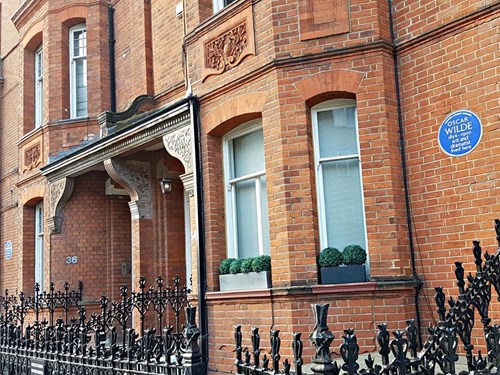
Shibden Hall: Anne Lister
Anne Lister (1791–1840) is often regarded as ‘the first modern lesbian’. She chronicled her relationships with other women in lengthy diaries, written in a secret code that was only cracked in the 1980s. She openly courted her female lovers and dressed in distinctive black and masculine attire. Her family home at Shibden Hall, Halifax, is a Grade II* listed historic manor house. It featured in the BBC drama Gentleman Jack, which told Anne Lister’s story and starred Suranne Jones. Its popularity after the TV series led to Shibden Hall receiving a vast increase in visitors.
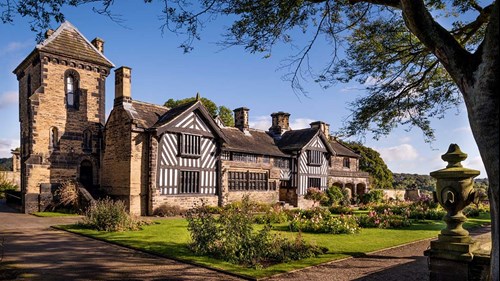
Plas Newydd: Eleanor Bulter and Sarah Ponsonby
Anne Lister knew two other well-known lesbians of the time, Eleanor Butler and Sarah Ponsonby. In 1780 Butler and Ponsonby fled Ireland and eloped to North Wales to set up home together at a small cottage called Plas Newydd in Llangollen.
They enhanced the building over the 50 years they lived there, adding Gothic adornments, oak panels, stained glass, a library and picturesque gardens. Outraging and fascinating public opinion in equal measure, Butler and Ponsonby eventually became accepted. Many of the period’s most famous names visited them, including William Wordsworth, the Duke of Wellington and Sir Walter Scott – while King George III granted a pension to support them. Plas Newydd is now a Grade II* listed museum.
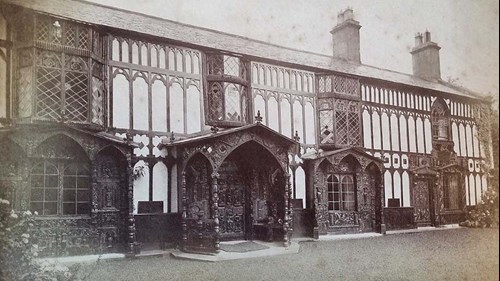
The Cabin: Judith Ackland and Mary Stella Edwards
Perched on the coastline of North Devon, the Cabin at Bucks Mills was the summer residence and studio of the painters Judith Ackland and Mary Stella Edwards. Ackland and Edwards met in London as art students and lived as partners for over 50 years. The Cabin is a tiny old fisherman’s store in the care of the National Trust. It looks almost exactly as it did when Edwards left the cabin after Ackland’s death in 1971, never to return. Today it is used by artists in residence during the summer months.
Ham Spray House: Dora Carrington, Ralph Partridge, Lytton Strachey
Ham Spray House is an isolated farmhouse in Berkshire that was the home of three members of the unconventional Bloomsbury Group between 1924-1961. The complicated love triangle of Dora Carrington, Ralph Partridge and Lytton Strachey found refuge there. The writers Partridge and Strachey were lovers, but Partridge and Carrington were married to each other; Carrington was also in love with Strachey.
Strachey and Carrington both died at Ham Spray House in 1932, but Partridge continued to live there until 1961. The house was visited by notable members of the Bloomsbury set, and featured in the 1995 film Carrington, starring Emma Thompson and Jonathan Pryce.
Smallhythe Place: Edy Craig
Edith (Edy) Craig was a suffragette playwright, theatre director and lesbian who did much to champion the cause of women’s rights in the early 20th century. She was the daughter of the famous Victorian actress Ellen Terry, and lived at Smallhythe Place in Kent, a Tudor house she inherited from her mother.
In the grounds Craig converted a thatched barn into a theatre where she staged radical feminist plays. Craig lived at Smallhythe in a ménage à trois with Christopher St John (born Christabel Marshall) and Clare ‘Tony’ Atwood. The house and grounds are a National Trust property open to the public.
Carlton House: George IV
Carlton House on the Mall was the home of the Prince Regent (1762-1830), who later became George IV. The Prince Regent led an extravagant lifestyle, and spent prodigiously on furniture, paintings, sculpture decorations and entertainments. The court that gathered at Carlton House certainly had a reputation for attracting the most gender fluid people of the day. It was called ‘that gay and heartless coterie who gathered round the Prince Regent in those gilded salons’.
Among the notable events that took place at Carlton House was a fencing match in 1787 involving the androgynous, cross-dressing Chevalier d’Eon. The house was demolished in 1825.
Famous buildings with LGBTQ+ history
The Gateways
People who pass the unassuming green door in Chelsea today would have no idea that this was once the entrance to Gateways, Britain’s first and longest running lesbian nightclub. It was opened in 1931 and became a predominantly gay and lesbian club in the 1950s.
It was run by Ted and Gina Ware and was one of the few places in London where members of the gay and lesbian community could meet and socialise openly. It featured in the film The Killing of Sister George in 1968 and was popular with celebrities like Diana Dors and Dusty Springfield. The Gateways club was rumoured to be the inspiration for the song ‘Green Door’.
Bletchley Park
Hut 8 at Bletchley Park is where the mathematician Alan Turing led his team of codebreakers as they successfully cracked the Enigma code in 1941. This was to prove pivotal in the outcome of the Second World War. Turing was later prosecuted for homosexual acts in the 1950s and chemically castrated. He is now seen as a hero who was cruelly treated by his country. The UK government issued an apology in 2009 and Turing was posthumously pardoned by Queen Elizabeth II in 2013. Bletchley Park is open to the public as a museum.
LGBTQ+ architecture
It’s important not just to remember who lived where, but that buildings throughout history have been designed and built by LGBT people too. Whether there’s such a thing as ‘LGBT architecture’ – styles and designs that directly reflect the sexuality of the architects - is up for debate.
Strawberry Hill
Strawberry Hill House in Twickenham has probably the strongest claim to represent such a style. It has been termed ‘queer Gothic’ and was the flamboyant concoction of the novelist Horace Walpole in the late 18th century. The house itself is a fantasy white castle with battlements, pinnacles, towers and Gothic windows. Inside it is adorned lavishly.
It is not known whether Walpole was gay, but he designed the house with help from a ‘Committee of Taste’, including several other bachelors and men with an interest in art and style. Walpole called Strawberry Hill ‘the prettiest bauble you ever saw’, and its charms can still be savoured today. The house and its beautiful gardens are open to the public, with regular guided tours available.
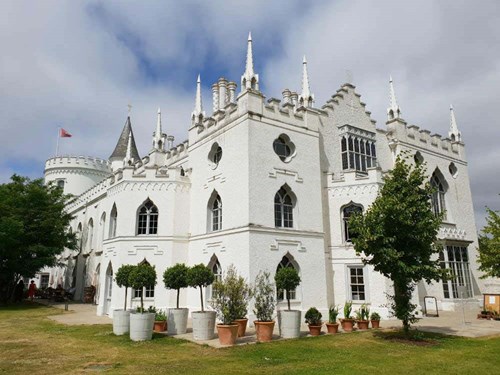
Deep and lasting influence
LGBTQ+ architects have put their imprint on a wide range of styles.
From Anne Lister’s Gothic additions to Shibden Hall, to what Butler and Ponsonby achieved at Plas Newydd, some experts see these as examples of a distinctive kind of LGBT architecture, balancing respectability with the need for self-expression.
But there are other stories too. Early gay rights pioneer Edward Carpenter (1844–1929) lived openly with his partner and designed a modest house in rural Derbyshire that championed the good and simple life, and activities such as crafts and market gardening.
His philosophy deeply influenced his close friend Sir Raymond Unwin (1863–1940), who took inspiration in his designs for Letchworth Garden City and Hampstead Garden Suburb, shaping the garden city movement.
Unwin also lobbied strongly for adequate working-class housing with homes that could be built quickly and cheaply, with gardens, privacy and adequate space – principles which proved to be hugely influential for British housing between the wars.
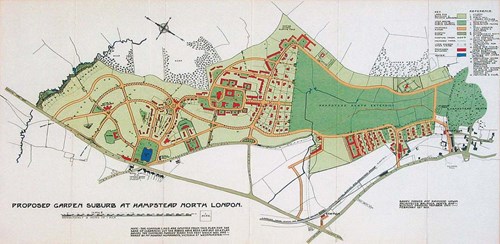
LGBTQ+ in the workplace
Construction today embraces diversity and LGBTQ+ equality, with strategies and policies in place to encourage an inclusive workforce, and equal and supportive workplaces.
Employers stand to gain when their people feel comfortable to be themselves. Fairer, more inclusive working environments make good business sense, by increasing job satisfaction, productivity, staff retention, recruitment options and brand reputation.
